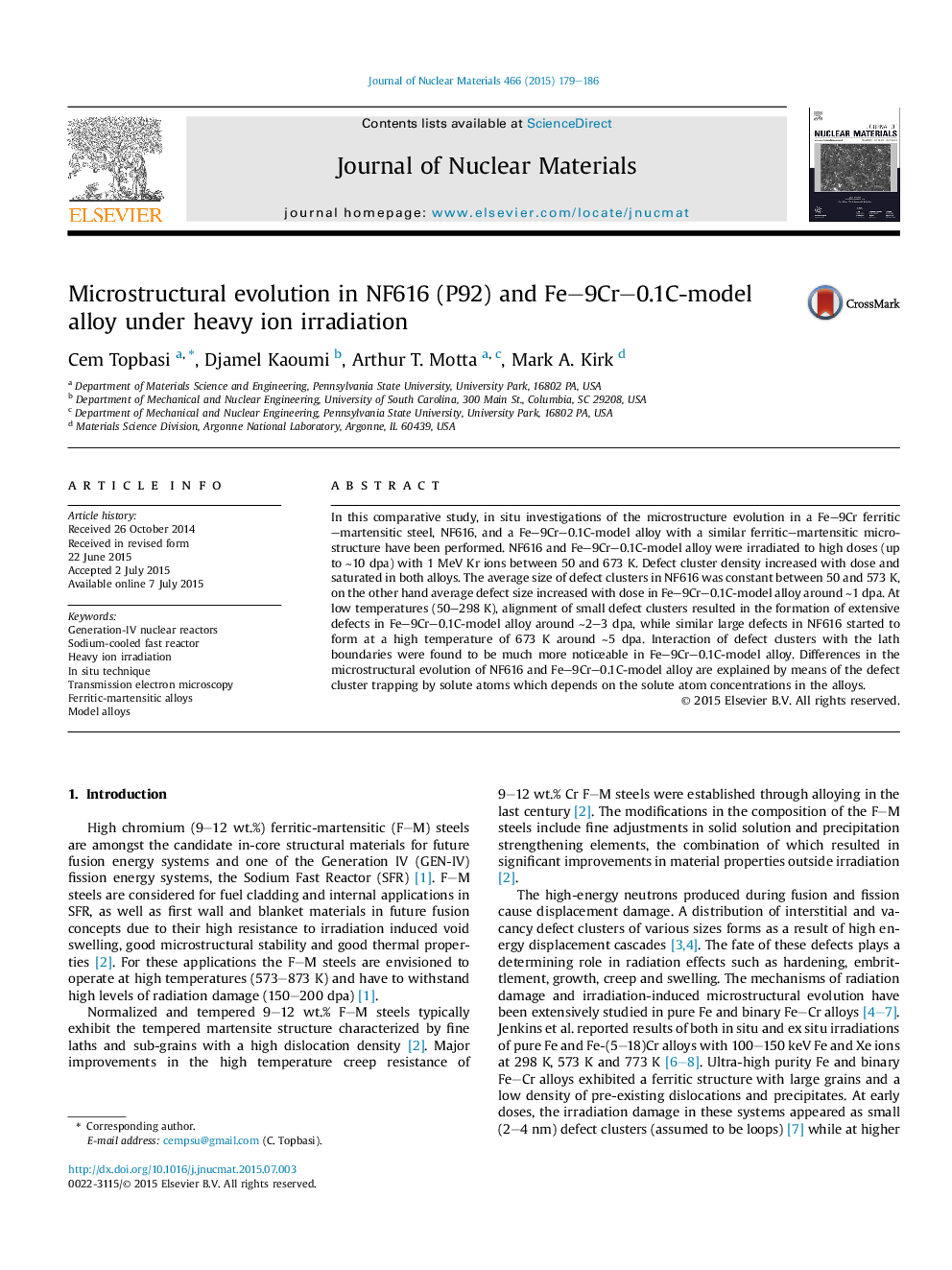| Article ID | Journal | Published Year | Pages | File Type |
|---|---|---|---|---|
| 7964809 | Journal of Nuclear Materials | 2015 | 8 Pages |
Abstract
In this comparative study, in situ investigations of the microstructure evolution in a Fe-9Cr ferritic-martensitic steel, NF616, and a Fe-9Cr-0.1C-model alloy with a similar ferritic-martensitic microstructure have been performed. NF616 and Fe-9Cr-0.1C-model alloy were irradiated to high doses (up to â¼10Â dpa) with 1Â MeV Kr ions between 50 and 673Â K. Defect cluster density increased with dose and saturated in both alloys. The average size of defect clusters in NF616 was constant between 50 and 573Â K, on the other hand average defect size increased with dose in Fe-9Cr-0.1C-model alloy around â¼1Â dpa. At low temperatures (50-298Â K), alignment of small defect clusters resulted in the formation of extensive defects in Fe-9Cr-0.1C-model alloy around â¼2-3Â dpa, while similar large defects in NF616 started to form at a high temperature of 673Â K around â¼5Â dpa. Interaction of defect clusters with the lath boundaries were found to be much more noticeable in Fe-9Cr-0.1C-model alloy. Differences in the microstructural evolution of NF616 and Fe-9Cr-0.1C-model alloy are explained by means of the defect cluster trapping by solute atoms which depends on the solute atom concentrations in the alloys.
Keywords
Related Topics
Physical Sciences and Engineering
Energy
Nuclear Energy and Engineering
Authors
Cem Topbasi, Djamel Kaoumi, Arthur T. Motta, Mark A. Kirk,
